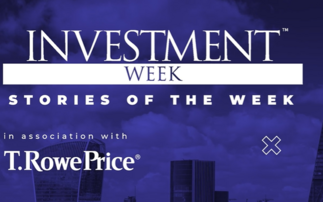
Listed infrastructure strategies are highly focused on a small subset of public companies, which provide critical services to society. They represent only a small component of the broad market yet contribute more than 20 percent of scope 1 carbon emissions, thus representing a major opportunity for impact.
Some approaches to sustainable investing establish a universe of companies by first applying a top-down screen, but we caution that this approach may frequently lead to missed opportunities in listed infrastructure. Prioritising in-depth, bottom-up analysis may be better suited to delivering positive outcomes and a targeted allocation to the asset class may further support this.
We explore three common drawbacks of relying on top-down screens to assess the sustainability characteristics of these companies.
1. Social responsibilities must be considered
Factors of critical social importance like reliability and affordability set natural limits on the pace of decarbonisation and electrification. What may look like a less ambitious decarbonisation pathway under some frameworks is often a response to a social constraint. Reliability, affordability, and job creation is heavily influenced by resource availability, weather, policy priorities, customer demographics and other considerations unique to a company's service territory.
Some sustainable investing practitioners prohibit investment in companies that continue to have a percentage of revenues tied to specific activities or do not meet top-down standards for decarbonisation efforts. None of these factors in isolation consider how an infrastructure company's environmental stewardship is shaped first and foremost by its social responsibilities. This does not mean that infrastructure companies should adopt less ambitious responses to climate-related opportunities and risks but are best assessed alongside any unique social constraints.
The data points that comprise third-party scoring of a company's social contributions typically focus on factors broadly applied across industries like diversity and employee engagement, rather than factors of unique operational relevance to infrastructure businesses like affordability and reliability. The perceived materiality of social factors for an infrastructure company may not reflect the unique role it plays in meeting the basic needs of its community.
2. Monopolies require unique considerations
Most listed infrastructure companies operate as regulated monopolies. Progress towards environmental and social goals stems from ongoing collaboration with regulators and users of the infrastructure, a prerequisite of a company's social license to operate. An infrastructure company's carbon emissions and involvement in fossil fuel activities reflects as much on the current state of our society as on the company itself. Ultimately, an infrastructure company must pursue environmental progress while continuing to deliver on its social obligation to serve.
The monopolistic nature of these businesses raises the stakes should a company fall out of favour with the broader market. If public equity investors shy away en masse, a company may have challenges remaining well-capitalised with potentially disastrous consequences for those that rely on access to basic services. A willingness to challenge the conventional wisdom regarding what is truly sustainable is a key source of our potential impact as investors.
3. Emerging markets companies rarely screen well
The MSCI ESG rating for the MSCI World Index is ‘AA' compared to a rating of ‘BBB' for the MSCI Emerging Markets Index.1 Among transportation infrastructure companies covered by MSCI ESG Research, 12 of 14 companies rated an ESG laggard operates in an emerging market.2 Environmental progress is more likely to be heavily constrained by affordability in developing countries and higher growth creates challenges for protecting the environment.
The generally weaker third-party ESG scores of emerging markets companies may create a commercial incentive to reduce investment in certain countries. Yet, these companies have an irreplaceable role to play in delivering the SDGs. In emerging markets, simply connecting a community to clean water and providing access to electricity or data transmission will quickly make the lives of many dramatically better.
Investing with Principal Sustainable Listed Infrastructure
At Principal, we believe a willingness to think critically about mainstream approaches to sustainability enables us to deliver excess returns while contributing to social and environmental progress. This may lead us to own companies that are out of favour with other market participants, and companies whose sustainability credentials are not yet reflected in market valuations.
A targeted allocation to listed infrastructure may be of specific appeal to investors focused on tangible social contributions and absolute carbon emissions reduction in the real economy. And leveraging sector specialists may also lead to better engagement outcomes, as companies are most likely to respond to constructive dialogue once we have demonstrated a deep knowledge of their business and respect for the trade-offs inherent in their efforts to strive for progress along all three pillars of sustainability. Establishing these relationships requires regular discussions over many years, a near impossibility for generalist investment teams.
1 FactSet. As of 31 December 2022.
2 MSCI ESG Research. Industry Report - Transportation Infrastructure. September 2022. ESG laggards are those with a rating of BB or below.
Investing involves risk, including possible loss of principal. Past performance does not guarantee future results. Infrastructure issuers may be subject to regulation by various governmental authorities and may also be affected by governmental regulation of rates charged to customers, operational, tariffs and changes in tax laws, regulatory policies and accounting standards. Foreign securities involve special risks, including currency fluctuations, lower liquidity, political and economic uncertainties and differences in accounting standards.












